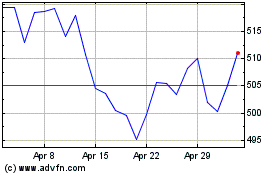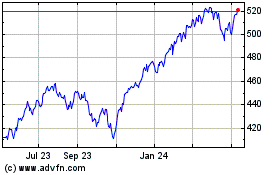Investors who thought that the stock markets would continue with
its bull run in 2014 have definitely been caught off guard, at
least for the time being. After posting a robust 30% return in
2013, S&P 500 fell around 3.6% at the close of last month,
marking the first monthly decline since May 2012 (read: 3 Niche
ETFs That Will Keep Flying).
The taper factor was certainly plaguing the markets and a slew of
sluggish economic data did not help matters. Moreover, concerns
over slowdown in the world’s second largest economy, China,
contributed to the volatility.
Also, emerging market currencies are witnessing extreme volatility.
Argentina’s currency decline marked the biggest tumble in more than
a decade, while the currencies of other emerging markets including
Turkey and South Africa weren’t spared either.
Thus, given the current volatile market scenario and that the Fed
has began winding up its massive stimulus program, it might be
prudent for investors to reallocate their portfolios to low risk
products. (Concerned About the Market? Try These Resilient
ETFs).
Low Risk ETFs
Low risk investments can prove to be quite effective in one’s
portfolio in arresting downside risks as compared to high beta
products. It is one of the most popular investing themes
these days, given the significant jump in volatility since the
start of the year.
These products have a low correlation with other assets classes,
and as such, go a long way to reduce the overall portfolio
risk.
Below, we have mentioned three low risk ETFs which can be good
choices to add to one’s portfolio, if the current turmoil in the
markets continues.
U.S. Market Neutral Anti-Beta
Fund (BTAL)
Using a long-short strategy might be a perfect way for investors to
hedge their portfolio amid the volatility in the market. As such,
BTAL is a good choice to do so (see all the Long-Short ETFs
here).
The fund tracks the performance of the Dow Jones U.S. Thematic
Market Neutral Anti-Beta Index before fees and expenses. BTAL
charges 99 basis points as fees, slightly expensive than other
broad based ETFs.
BTAL takes a long position on low beta stocks, while at the same
time taking a short position on high beta securities of
approximately equal dollar amounts, within each sector. The index
seeks to deliver the spread return between low beta and high beta
stocks (stocks that are more volatile than the index).
The fund is equal weighted, dollar neutral, sector neutral and
doesn’t uses leverage. The fund holds a long position in 200
stocks, having an average beta of 0.87, and a short position in
another basket of 200 stocks with an average beta of 1.43.
Investors are expected to profit from this fund when the basket of
long stocks outperforms the short portfolio.
Also, investors should keep in mind that due to the fund’s unique
style of investing, the fund will underperform in bull markets and
outperform in bear markets.
As such, the fund lost 11% in 2013. Though that’s the case for last
year, things might turn around this year, if the current
sluggishness in the markets continues.
IQ Merger Arbitrage ETF (MNA)
This fund too is a great choice for investors looking for
uncorrelated ETFs amid the weakness in the market. The fund focuses
on the merger arbitrage space and might hold up even in uncertain
economic conditions.
The fund tracks the IQ Merger Arbitrage Index, a broad benchmark of
companies for which there has been a public announcement of a
takeover.
The objective of the ETF is to generate returns that are
representative of global merger arbitrage activity, while also
including short exposure to global equities as a type of market
hedge (see all the Hedge Fund ETFs here).
The fund gains by going long in the to-be-acquired company and
holding until the merger is completed. This is because when such a
takeover deal is made public, the companies being acquired usually
see a rise in their share prices, although not up to the
acquisition price.
The fund manages a small asset base of $25.5 million, charging 75
basis points as fees.
As per the most recent fact sheet, the fund holds 42 securities,
while Cole Real Estate Investments, Inc. (12.36%), ViroPharma
Incorporated (9.56%) and Tokyo Electron Ltd. (9.48%) are the top
three holdings.
The fund has shown decent performance since the start of the year,
adding 2% so far, as against a decline recorded by all major
indices.
IQ Hedge Multi-Strategy Tracker ETF (QAI)
The fund tracks the IQ Hedge Multi Strategy Index, which seeks to
replicate the returns of hedge funds. The ETF is a fund of funds
and uses various hedge fund strategies to reduce the overall
correlation with equity markets, though the fund does not invest in
hedge funds itself.
The fund manages an asset base of $653.5 million and has a decent
volume with 145,887 shares traded in a day.
Some of the strategies employed by the ETF include long/short
equity, global macro, market neutral, event driven, fixed income
arbitrage, and emerging markets.
The fund invests in a variety of asset classes including bonds,
equities, currencies and commodities and charges 75 basis points as
fees.
Thus, the fund’s use of multi-strategy and multi-asset class
investing lowers volatility and correlation with other assets
classes. This is pretty much reflected by the fact that the fund
has a low annualized standard deviation of just 7.01% and a beta of
0.21.
Want the latest recommendations from Zacks Investment Research?
Today, you can download
7 Best Stocks for the Next 30
Days. Click to get this free report >>
QS-US MN AN-BET (BTAL): ETF Research Reports
IQ-MERGER ARB (MNA): ETF Research Reports
IQ-HEDGE MUL-ST (QAI): ETF Research Reports
SPDR-SP 500 TR (SPY): ETF Research Reports
To read this article on Zacks.com click here.
Zacks Investment Research
Want the latest recommendations from Zacks Investment Research?
Today, you can download 7 Best Stocks for the Next 30 Days. Click
to get this free report
SPDR S&P 500 (AMEX:SPY)
Historical Stock Chart
From Mar 2024 to Apr 2024

SPDR S&P 500 (AMEX:SPY)
Historical Stock Chart
From Apr 2023 to Apr 2024
